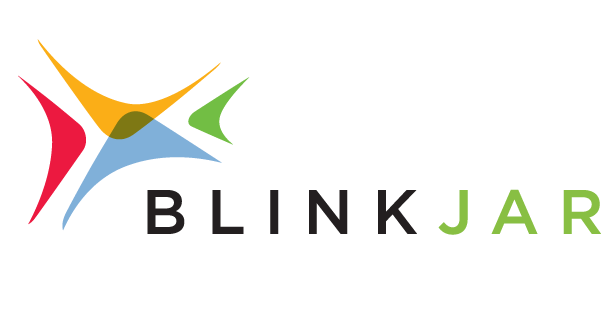The Key Factors in SEO for Driving Website Traffic and Success
For businesses trying to boost their online presence and generate organic traffic, search engine optimization, or SEO, is an essential tactic. But SEO is more than just adding keywords to your content. It requires several different strategies that work together to put your website in front of the people you want and need.
1. Keyword Research and Website Optimization
Researching keywords is the cornerstone of SEO. By choosing keywords for your target audience, you can make sure that your content shows up in search results that are pertinent to your business and goals. However, it’s not just about selecting any term; it’s about discovering keywords with the perfect balance of search volume and competition.
While short, popular keywords may be difficult to rank for, long-tail keywords (more specific phrases) often have less competition and attract highly targeted traffic. Once you’ve identified your keywords, it’s important to use them naturally throughout your content, especially in critical places like titles, headers, meta descriptions, and the body of the text. But avoid keyword stuffing, which can lead to penalties from search engines.
2. High-Quality Content for Your Website
One of the key components of SEO is producing content that is interesting, educational, and of the highest caliber. Content that offers genuine value to users by addressing their queries or resolving their issues is given priority by search engines.
Your content should be relevant to the target keywords and offer insightful information. Content that directly addresses user intent will rank higher. In many cases, longer, well-researched content ranks better because it provides more comprehensive answers. However, quality is more important than quantity—content should be detailed without being repetitive or padded. Regularly updating your content or adding new blog posts can also help improve your ranking, as search engines often prioritize fresh content.
3. Your Website’s On-Page SEO
On-page SEO refers to optimizing individual web pages to rank higher and earn more traffic from search engines. Key on-page factors include:
- Title Tags: A well-crafted title tag is crucial. It should be concise, include the main keyword, and clearly describe the content of the page.
- Meta Descriptions: These should also include the target keyword and give a brief, enticing summary of the page to encourage clicks from the search results.
- Header Tags (H1, H2, H3): Using header tags helps search engines understand the structure of your content, improving readability and SEO.
- Internal Linking: Linking to other relevant pages on your website can help spread link equity, improve navigation, and enhance user experience.
4. Technical SEO for Your Website
Technical SEO focuses on improving the backend structure of your website to ensure it is easily crawled and indexed by search engines. It includes:
- Website Speed: Slow-loading websites are penalized by search engines and frustrate users. Optimizing site speed can lead to better rankings and user engagement.
- Mobile-Friendliness: With the majority of users accessing the web via mobile devices, ensuring your website is responsive and mobile-friendly is critical for ranking well in search engines.
- Crawlability: Search engines use bots to crawl and index websites. Ensuring that your site is free from broken links, has a clean sitemap, and uses robots.txt correctly helps in smooth crawling and indexing.
- SSL Certificates: Security is another important ranking factor. Having an SSL certificate (HTTPS) protects user data and signals to search engines that your site is trustworthy.
5. User Experience (UX) of Your Website
Search engines are placing increasing importance on user experience as a ranking factor. A website that is easy to navigate, fast, and provides a great overall experience will rank better.
- Bounce Rate and Dwell Time: A high bounce rate (users leaving the site quickly) can indicate to search engines that your site isn’t providing value, negatively affecting your rankings. Conversely, if users spend a lot of time on your site (dwell time), it signals high engagement, which can boost your rankings.
- Mobile Usability: Websites that offer an excellent mobile experience perform better in rankings. This includes easy navigation, readable fonts, and quick load times on mobile devices.
6. Backlinks and Domain Authority for Your Website
Backlinks are one of the most influential ranking factors in SEO. When other reputable websites link back to your site, it signals to search engines that your content is authoritative and trustworthy.
- Quality over Quantity: Not all backlinks are created equal. A few high-quality backlinks from authoritative sites are far more valuable than many links from low-quality or spammy websites.
- Natural Link Building: Search engines favor natural backlinks that are earned due to the quality of your content rather than paid or manipulative links.
7. Local SEO for Your Business
For businesses with a physical location or service area, local SEO is crucial. Optimizing for local search results helps businesses attract customers from a specific geographic area.
- Google My Business: Ensure your Google My Business profile is complete and accurate, including business name, address, phone number, hours of operation, and customer reviews.
- Local Keywords: Incorporate location-specific keywords to attract local customers.
8. Digital Marketing Analytics and Monitoring
Regularly monitoring your website’s performance and marketing analytics and making adjustments based on data is vital for ongoing SEO success.
- SEO Tools: Tools like Google Analytics, Google Search Console, and SEMrush can help track keyword rankings, traffic, and other important metrics.
- Regular Audits: Performing regular SEO audits ensures your website remains optimized, helping you identify areas for improvement and adapt to search engine algorithm updates.
SEO is an ongoing process that requires attention to detail, constant adaptation, and a focus on delivering the best user experience. For over a decade, BlinkJar Media has been helping businesses and organizations maximize their digital marketing efforts and online presence. Contact BlinkJar Media for the latest expertise in SEO strategies that get your website found and grow your business!









